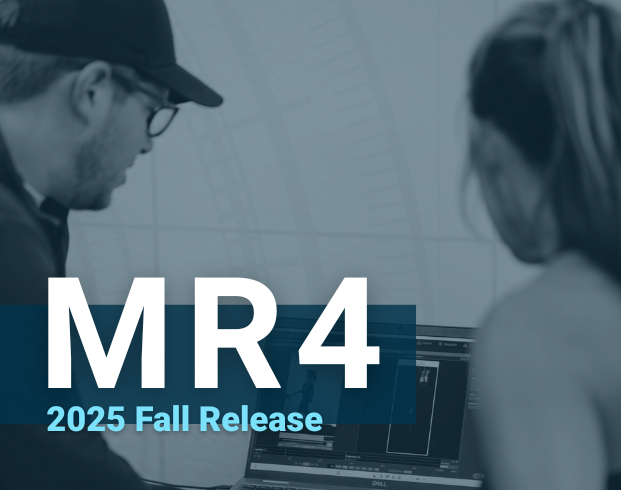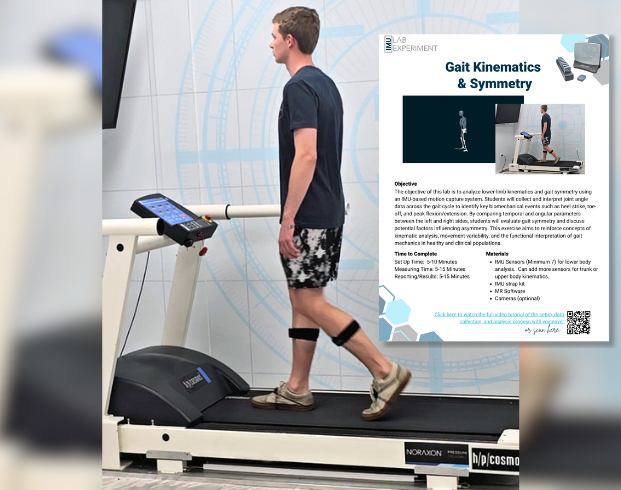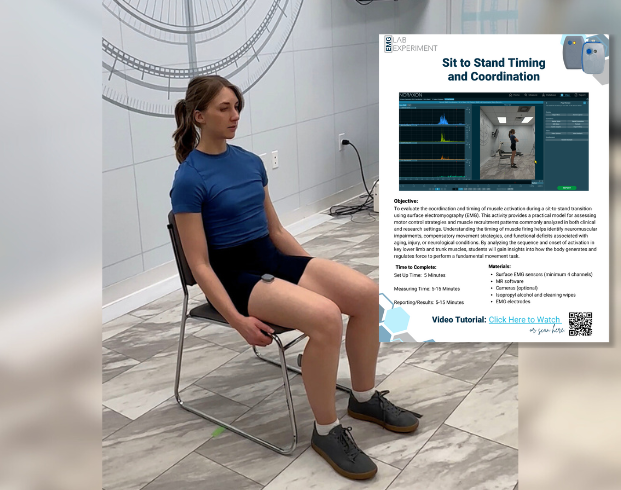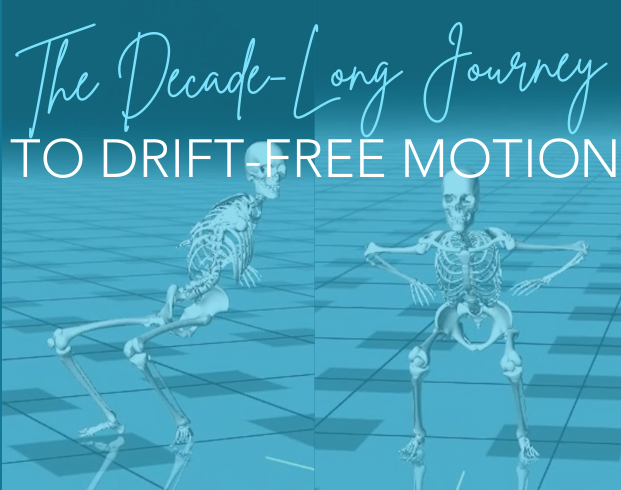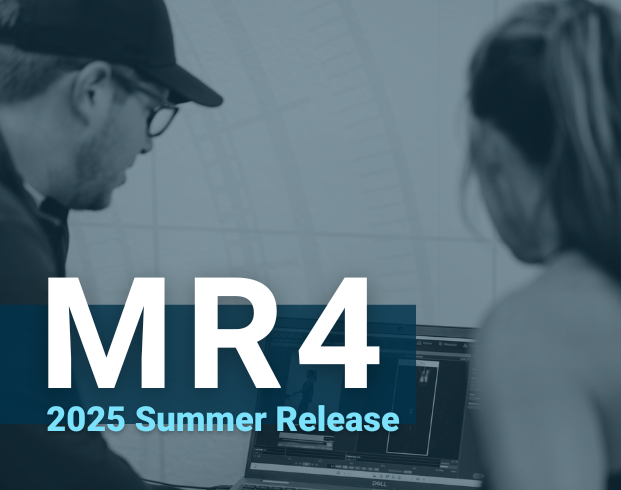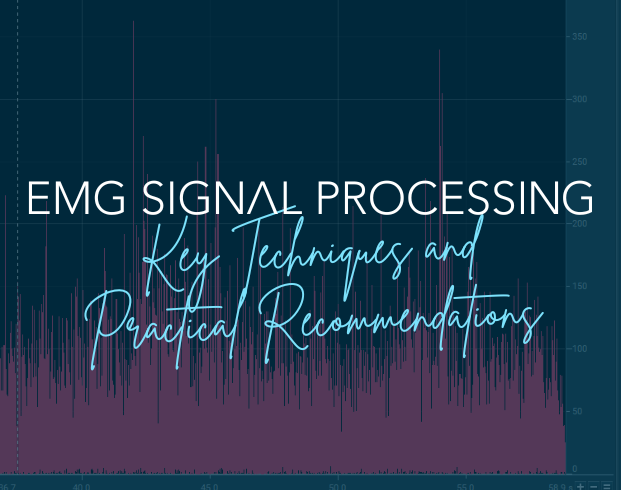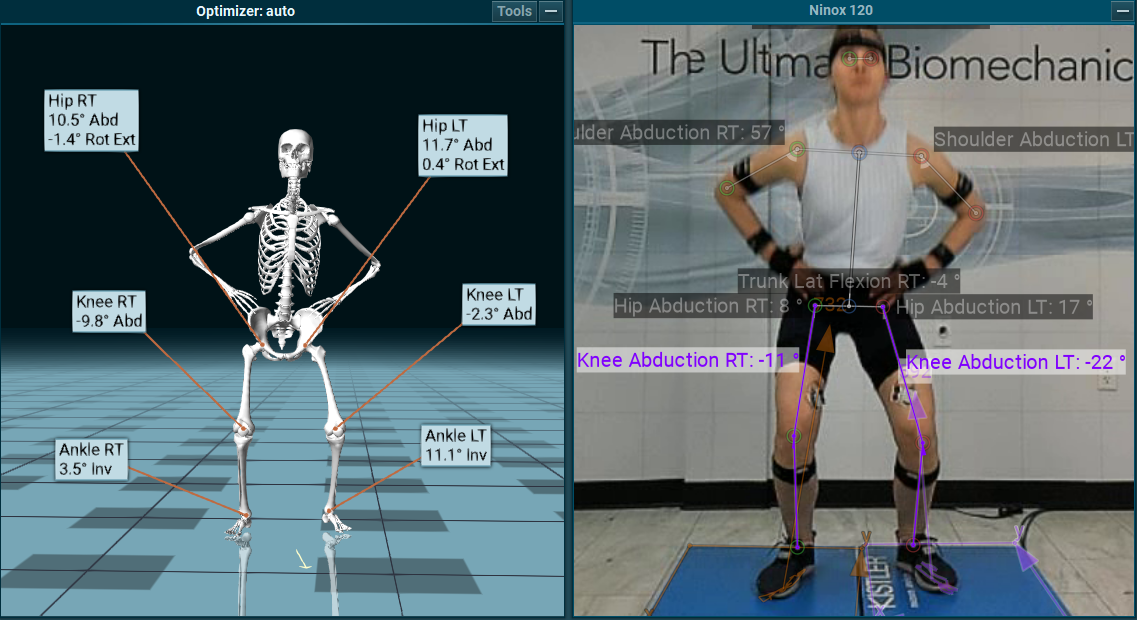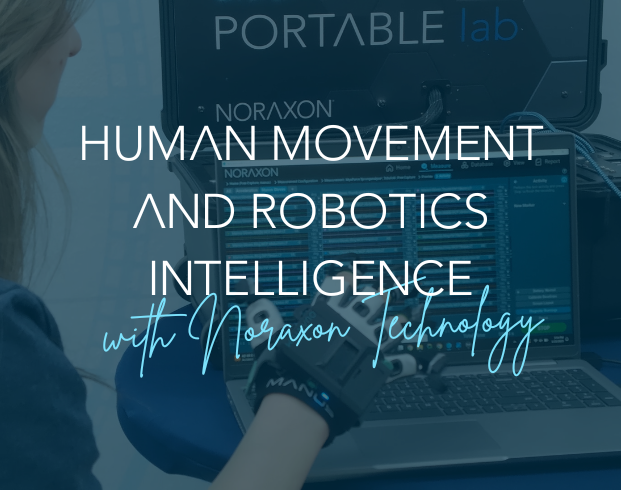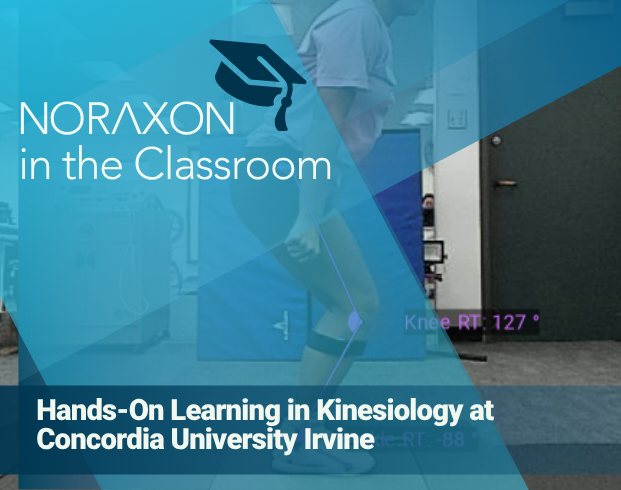The Fall 2025 Release brings major enhancements to calibration flexibility, force-plate analytics, and biofeedback options. This update continues our focus on delivering tools that work in real-world environments, support clinical and performance workflows, and expand the analytical depth of MR4. Below is an overview of what’s new in this release. Download the MR4 Fall
Gait Kinematics and Symmetry In this lab, students will use an IMU-based motion capture system to measure and analyze lower-limb movement throughout the gait cycle. By comparing joint angles and timing between the left and right sides, they will assess gait symmetry and explore the biomechanical factors that influence walking patterns.
Sit to Stand Timing and Coordination This lab explores the coordination and timing of muscle activation during a sit-to-stand transition using surface EMG. By examining the onset and sequence of activation in key lower limb and trunk muscles, students gain practical insight into motor control strategies, muscle recruitment patterns, and how the body
Introducing Intelligent Drift Stabilization in MR4 The Hidden Enemy: IMU Drift For anyone working with inertial motion capture (IMU systems), drift has always been the hidden enemy. Over time, small orientation errors compound into significant deviations, a problem magnified during long or uncontrolled recordings. Traditional solutions like recalibrations, reference poses, or
The MR4 2025 Summer Release brings major advancements in motion data quality, workflow efficiency, and visual analysis. Headlining this release are Intelligent Drift Stabilization for Motion—our fastest and most advanced modeling optimization yet—and the Translation Toolbox, which generates linear motion signals such as displacement, velocity, and distance directly from IMU or model-based data. Other
Our internship is a flexible, hands-on role that puts students in the field with our engineering experts and in the midst of helping us create and test solutions to our customers’ needs. This summer, we were excited to have Rory Maguire and Braden Noll on board as part of our summer internship program.
Electromyography (EMG) captures valuable data about muscle activity, but the raw signal is noisy, variable, and difficult to interpret without proper processing. This article outlines the most common EMG processing techniques, explains when and why to apply them, and incorporates practical implementation details from Noraxon’s MR software platform Filtering: The
Motion analysis is widely used in clinical, research, and athletic settings to assess joint function, identify movement inefficiencies, and inform rehabilitation or performance programs. While 2D video analysis remains a popular and accessible tool, it comes with important limitations; especially when compared to 3D systems such as IMU-based motion capture.
As robotics evolves from rigid automation into dynamic, human aware systems, one challenge continues to define the field: how can machines truly understand and respond to human movement? The answer lies in biomechanics. Human Data for Intelligent Robotics Whether developing exoskeletons, prosthetic limbs, humanoids, or collaborative robotic arms, engineers
At Concordia University Irvine, students in the Department of Kinesiology are engaging with biomechanics technology that brings textbook concepts to life. Under the direction of Dr. Eun-Jeong Lee, Ph.D., Assistant Professor of Kinesiology, Noraxon’s movement analysis tools are playing a vital role in both classroom instruction and student-led research. Integrating Noraxon Technology into

